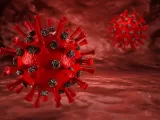
The role of ‘junk DNA’ sequences in ageing and cancer
July 25, 2021The human body is essentially made up of trillions of living cells. It ages at the same rate as its cells, which eventually stop replicating and dividing. Scientists have long recognised that genes influence how cells age and how long people live, but the exact mechanism by which this occurs is unknown. A new study led by researchers at Washington State University has solved a small piece of that puzzle, bringing scientists one step closer to solving the mystery of ageing.
A team led by Jiyue Zhu, a professor in the College of Pharmacy and Pharmaceutical Sciences, recently discovered a DNA region called VNTR2-1 that appears to regulate the activity of the telomerase gene, which has been shown to prevent ageing in certain types of cells. The study was published in the journal Proceedings of the National Academy of Sciences (PNAS).
The telomerase gene controls the activity of the telomerase enzyme, which aids in the formation of telomeres, which are caps at the ends of each strand of DNA that protect the chromosomes of our cells. Normal cells’ telomeres shorten slightly each time they duplicate their DNA before dividing. Cells lose their ability to reproduce when their telomeres become too short, eventually ageing and dying. However, telomerase gene activity ensures that telomeres are reset to their original length during DNA replication in certain cell types, such as reproductive cells and cancer cells. This is essentially how the ageing clocks of new offspring are reset, but it is also how cancer cells can continue to multiply and form tumours.
Understanding how the telomerase gene is regulated and activated, as well as why it is only active in certain types of cells, could one day lead to a better understanding of how humans age and how to prevent cancer spread. That is why Zhu has spent the last two decades of his scientific career focusing solely on this gene.
According to Zhu, his team’s recent discovery that VNTR2-1 contributes to telomerase gene activity is particularly noteworthy due to the type of DNA sequence it represents.
“Nearly half of our genome is made up of repetitive DNA that doesn’t code for proteins,” Zhu said. “In the human genome, these DNA sequences are commonly referred to as ‘junk DNA’ or ‘dark matter,’ and they are notoriously difficult to study. Our findings show that one of these units serves a purpose by increasing the activity of the telomerase gene.”
Their discovery is based on a series of experiments that revealed that deleting the DNA sequence from cancer cells caused telomeres to shorten, cells to age, and tumours to stop growing. Following that, they looked at the length of the sequence in DNA samples taken from Caucasian and African American centenarians as well as control participants in the Georgia Centenarian Study, which followed a group of people aged 100 and up from 1988 to 2008. The length of the sequence varied between 53 and 160 repeats — or copies — of the DNA, according to the researchers.
“It varies significantly,” Zhu explained, “and our study shows that people with a longer sequence have a higher level of telomerase activity.”
Because extremely short VNTR2-1 sequences were found only in African American participants, the researchers looked into that group further and discovered that there were relatively few centenarians with a short VNTR2-1 sequence when compared to control participants. However, Zhu cautioned that a shorter sequence does not always imply a shorter lifespan, as it may indicate that the telomerase gene is less active and your telomere length is shorter, which may lower your risk of developing cancer.
“Our findings indicate that the VNTR2-1 sequence contributes to the genetic diversity associated with how we age and develop cancer,” Zhu said. “Oncogenes — or cancer genes — and tumour suppressor genes, we know, do not account for all of the factors that contribute to the development of cancer. Our findings show that the picture is far more complicated than a single oncogene mutation, and they make a strong case for broadening our research to include this so-called junk DNA.”
Because African Americans have been in the United States for generations, many of them may have inherited some of this sequence from their Caucasian ancestors, according to Zhu. As a result, he and his colleagues are hoping to study the sequence in an African population as a next step.
Reference
Xu, T., Cheng, D., Zhao, Y., Zhang, J., Zhu, X., Zhang, F., … & Zhu, J. (2021). Polymorphic tandem DNA repeats activate the human telomerase reverse transcriptase gene. Proceedings of the National Academy of Sciences, 118(26).


